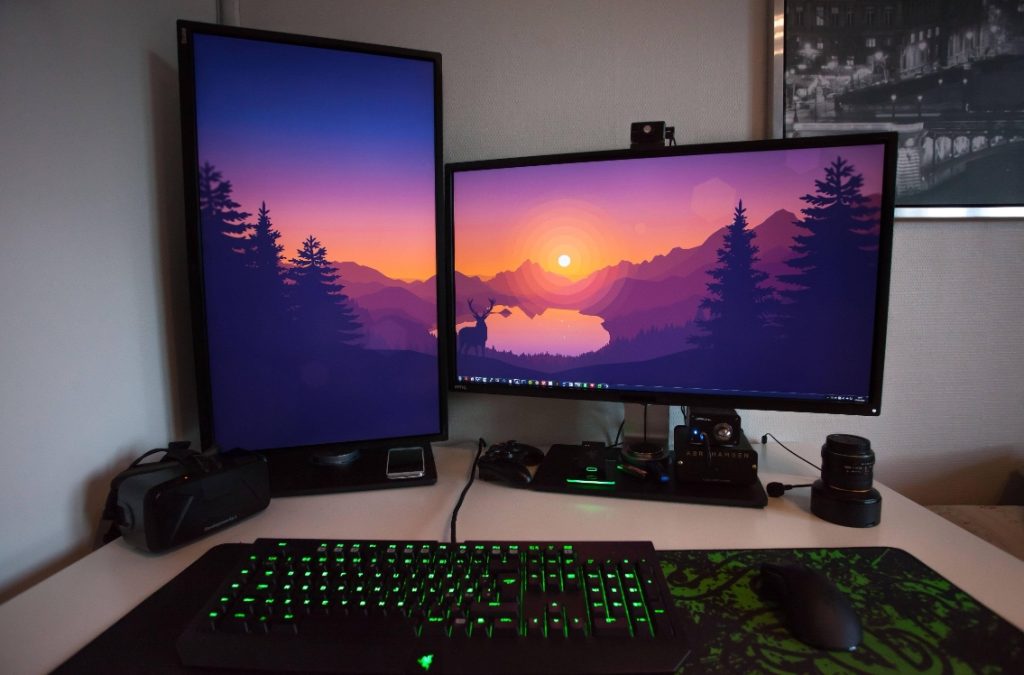- Check Ports Availability: First, identify the available video output ports on your computer, such as HDMI, DisplayPort (DP), VGA, DVI, or USB-C with DisplayPort Alt Mode. Ensure that your monitors also have compatible input ports.
- Obtain Necessary Cables: Based on the ports available, acquire the appropriate cables. For instance, if your computer has HDMI and DisplayPort outputs, and both monitors support these inputs, you’ll need an HDMI cable and a DisplayPort cable.
- Connect the Monitors: Plug one end of each cable into the corresponding ports on your computer, and the other end into the input ports on your monitors.

- Power Up: Turn on both monitors and your computer.
- Configure Display Settings:
- On Windows: Right-click the desktop, select “Display settings.” Here, you can arrange your displays, set their resolution, and choose which one is the primary display.
- On macOS: Open “System Preferences,” go to “Displays,” and then “Arrangement” to configure how your screens are positioned relative to each other and set the primary display.
- Extend or Mirror Displays: Decide whether you want to extend your desktop across both monitors (providing more workspace) or mirror the same content on both screens. This option is usually found in the same display settings menu.
By following these steps, you should be able to successfully connect and configure two monitors to a single computer, enhancing your productivity or gaming experience.





